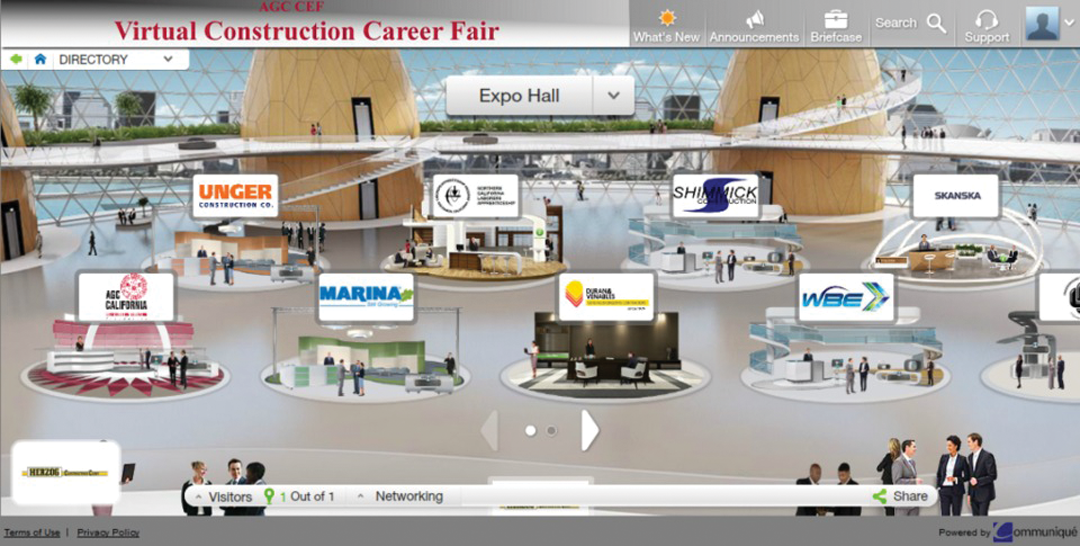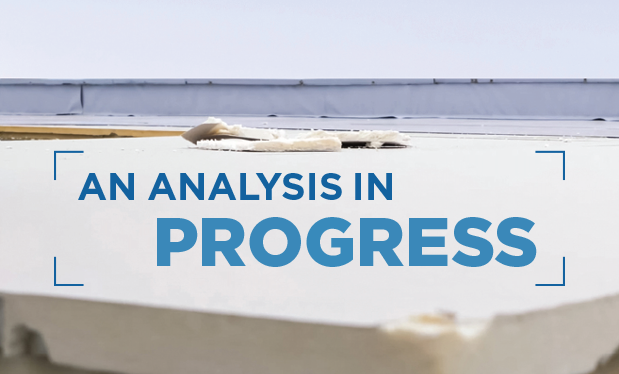Virtual construction fair attracts job seekers

|
As the number of job openings in the construction sector reaches a post-recession high in the U.S., there currently are 17% fewer people working in construction than when the market was at its peak, according to forconstructionpros.com.
To help combat the construction industry’s labor shortage, the Associated General Contractors of California hosted a Virtual Construction Career Fair to connect job seekers with recruiters from construction firms and apprenticeship programs in California. Recruiters were looking to fill a variety of positions, including skilled labor, project engineering, project management, accounting and business development.
“Our workforce development efforts are making important strides to tackle the industry’s growing workforce gap,” says Erin Volk, vice president of workforce and community development for AGC of California. “The construction industry is in dire need of a massive number of new and skilled workers in order to sustain and grow.”
Interested companies received a booth at the virtual job fair to connect with job seekers. A diverse group of individuals attended the free event and met with recruiters, submitted their resumes and participated in Skype interviews—all from their laptops or smartphones.
Construction executives are not prepared for cyberattacks
The 2019 Travelers Business Risk Index shows nearly half of construction executives believe their firms will be victims of future cyberattacks, but 68% haven’t assessed their risks or prepared cybersecurity plans.
The index also reported cyberattacks are increasing on businesses of all sizes across many industries. The number of large businesses attacked has increased 73% since 2015, and the number of medium-sized and small businesses attacked increased 100% and 200%, respectively, during that time.
Richard Volack, chairman of River Edge, N.J.-based Peckar & Abramson’s cybersecurity and data privacy practice, says phishing-related incidents—sending fraudulent emails to persuade individuals to reveal personal information—have increased during the past five years. Volack says industries such as construction are under attack because hackers can target employees’ personal information and information about companies’ classified plans or specs on government projects.
Volack says hackers can find their way into a construction firm’s system by posing as a subcontractor and messaging company accountants and claiming to have a new routing number or by pretending to be an executive and emailing an employee asking for vital information on a Friday afternoon. And fake emails increasingly are looking more authentic. Hackers also can use ransomware during a cyberattack, taking over the computer systems of large facilities and demanding payment in exchange for not erasing vital information.
Smaller and medium-sized businesses often are targeted because they have fewer resources to protect themselves and do not plan for cyberattacks. The index revealed only 51% of all U.S. businesses surveyed have purchased cybersecurity insurance, and few are implementing important security training and safety measures.
Experts encourage businesses to protect their information by implementing appropriate levels of cybersecurity. Some helpful steps can include using two-factor authentication for passwords and implementing antivirus software.
Larger construction firms should be aware hackers can gain access to their data through a smaller company’s weak security. Firms that share digital information with smaller-sized contractors should consider requiring the contractors they work with to have a certain level of cybersecurity protection in place going forward.
Solar energy production increased during 2019
Solar energy production, including energy produced by small-scale solar photovoltaic systems, grew 13.7% during the first eight months of 2019 compared with the same time period in 2018 and accounted for more than 2.7% of total electrical output in the U.S., according to solarindustrymag.com.
Data from the Energy Information Administration also revealed small-scale solar energy production, such as energy from distributed rooftop systems, increased 19.1% and provided 32.6% of total solar electrical generation. The growth rate of distributed solar was greater than any other energy source.
The increase in solar energy production was part of an overall increase in energy production from renewable energy sources. Solar, wind, biomass, geothermal and hydropower accounted for 18.49% of net domestic electrical generation during the first eight months of 2019 compared with 17.95% one year earlier.
Combined, wind and solar accounted for 9.64% of U.S. electrical generation through the end of August 2019.



